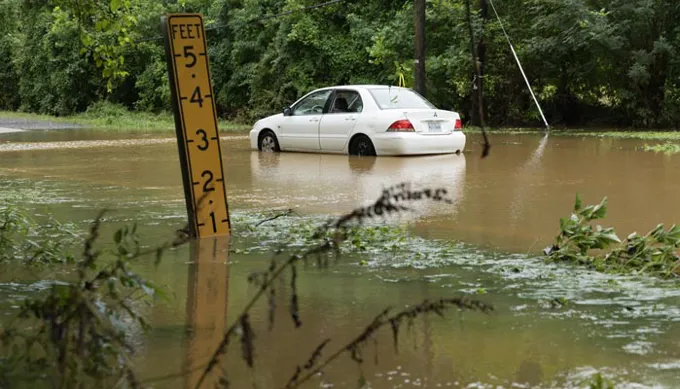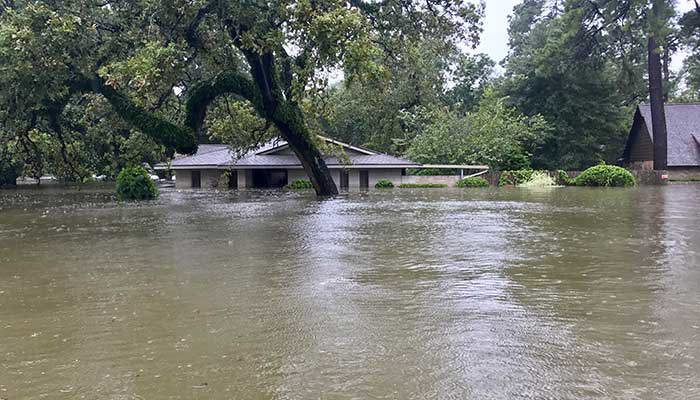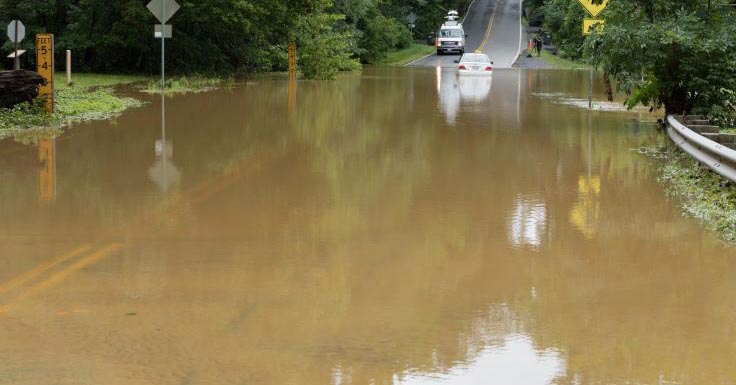
Virginia’s New Battle Plan Against Flood - Effective July 1, 2020
Enacting HB 1313
Two years ago my colleague and fellow Waterfront Property Law Attorney Jeff Wilson wrote about the alarming scenario looming for all Virginians (especially those in coastal Virginia) if the Virginia Shoreline Resiliency Fund remains penniless, and the state government remains without a plan to prevent and protect against flooding (other than cheering the ad hoc efforts of a few localities). Two consecutive Governors (McAuliffe and Northam) issued Executive Orders that brought piecemeal advances.
The election in November 2019, however, unified Virginia government under a single party thus clearing the way for the General Assembly to enact an astoundingly high number of bills (2,203!). Included in that torrent of new legislation were several bills that signal a new urgency and direction in dealing with flooding. Chief among them is House Bill 1313 (HB 1313), which came into force on July 1, 2020.

(MDay Photography / Shutterstock.com)
Appointing A Chief Resilience Officer
Prior law enacted in 2018 (Virginia Code §2.2-435.11) created the position of Special Assistant to the Governor for Coastal Adaptation and Protection. Governor Northam appointed retired Navy Rear Admiral Ann Phillips to the position. Her post however lacked force of law, lacked staff and lacked funding, which meant that her position offered her the opportunity to travel around the state for the purpose of “convincing” others of the importance of flood prevention programs.
A few months after appointing Ms. Phillips to her post, Governor Northam through Executive Order appointed Secretary of Natural Resources Strickler as the Chief Resilience Officer of the Commonwealth. Prior law also created the Virginia Shoreline Resiliency Fund but the General Assembly never appropriated any dollars to the fund.
HB 1313’s Impact on the Chief Resilience Officer Position
HB 1313 codified the Chief Resilience Officer position in the administration and empowered him or her as “the primary coordinator of resilience and adaptation initiatives in Virginia and as the primary point of contact regarding issues related to resilience and recurrent flooding.” The Chief Resilience Officer carries out his or her duties in consultation with the Special Assistant to the Governor for Coastal Adaptation and Protection. Those duties (set forth in Virginia Code §2.2-222.4) include:
- Identify and monitor areas that are at greatest risk from recurrent flooding and recommend actions to address those risks
- When requested by a locality to do so, review and comment on that locality’s plans for construction or substantial reinforcement of its flood defense infrastructure
- Pursue funding for resilience initiatives
- Coordinate the flood-related funding initiatives of all agencies of the Commonwealth
What Does HB 1313 Entail?
The new law to this point calls for data gathering around the problem of flooding, the formation of recommended actions, and empowers the Chief Resilience Officer as the clearinghouse for all agencies of the Commonwealth that wish to pursue funding for resilience initiatives. This is real progress, given where we were. Though it does not deliver “the solution” to flooding in Virginia, HB 1313, together with several of the other new laws (to be discussed momentarily) represents a clear path toward finding an eventual solution.
Note also that HB 1313 amends Virginia Code §10.2-658 to confirm that “rising tidal waters” are a cause of recurrent flooding. Inclusion of this phrase in the statute allows state funding to reach municipal and community institutions and programs that previously were ineligible for such support. HB 1313 also amends Virginia Code §10.1-659 to pull in many additional sources of knowledge (such as the Virginia Coastal Resilience Master Plan) into the dialogue undertaken by agencies of the Commonwealth and nongovernmental organizations in the development of Virginia’s flood protection programs.
Why HB 1313 Matters
Why does all of this coordination matter? Designing the solution that will prevent and protect Virginians from flooding is a complex task. More knowledge from more subject matter experts produces a better end result. But coordination matters also in the competition for resources.
As Ms. Phillips told us when we interviewed her for this article, vertical and horizontal intergovernmental collaboration is a critical evaluation factor when the federal government allocates its grant resources. HB 1313 vastly improves Virginia’s ability to compete for and win resources in that arena.
The new law only goes but so far. For example, the Commonwealth currently does not have any state level capacity in the urban planning sector since such matters are usually addressed at a local level. Ms. Phillips emphasized when we interviewed her that some state government oversight in urban planning is necessary in the grand scheme of flood prevention. We would hope that this will be considered in future legislative efforts.
Support From Other Laws Enacted in 2020
There are a host of other new laws enacted in 2020 (took effect on July 1) that work hand-in-glove with HB 1313. We have previously shared how SB 320 converted the (never-funded) Virginia Shoreline Resiliency Fund into the (perpetually funded) Virginia Shoreline Resiliency Fund, and provided an assured source of funding by channeling into the fund grant revenue obtained from the federal government (see the passage, above, regarding the importance of coordination).
It also receives revenue from the sale of emission allowances through Virginia’s entry into the Regional Greenhouse Gas Initiative, which was an occurrence made possible by the 2020 General Assembly’s enactment of the landmark and ground-breaking Virginia Clean Economy Act. This act not only paves the way for Virginia to join the Regional Greenhouse Gas Initiative (RGGI), but also mandates the elimination of all of Virginia’s coal fired electric utility plants by 2024, among other things. Reduction of Greenhouse Gas emissions through RGGI aids in Virginia’s program against flooding because it counters sea level rise, a significant contributor to flooding in Virginia.

(tlindsayg / Shutterstock.com)
Why Virginia Needs Flood Preparedness Measures
For ordinary Virginia waterfront property owners, flooding is a continuing problem. In Virginia, waterfront properties are losing value due to “sunny day” or “high tide” flooding, along with other problems such as beaches being eroded, stormwater systems being overloaded, and farmers being badly hurt by sea level rise. The prevention of flooding is especially urgent for coastal Virginians. Hampton Roads has the second greatest flooding risk in the entire United States.
The City of Norfolk is projected by 2040 to be overflown by high tide water twice daily over its streets and the banks of its rivers. Norfolk has expended $650,000 to purchase four properties and return them to nature, while more than 1,000 properties are still at significant risks to be flooded. Norfolk has at its municipal level implemented several measures to overcome these issues, such as establishing weekly City Flood Prevention Committee Meeting, Community Emergency Response Team, etc.
Ms. Phillips was right when she told us that the battle against flooding in Virginia is a persisting and long-term war. HB 1313 and the companion new bills enacted in the 2020 session will go a long way toward getting state government in Virginia out in front in the effort to find a long-term and durable solution.
Are you having any flood-related legal concerns? The experienced team here at Waterfront Law is always here to address your residential and commercial Waterfront Property issues, feel free to contact us here.
A special thank you to our Summer Associate, Yuyao Chen, for her assistance in preparing this article.
